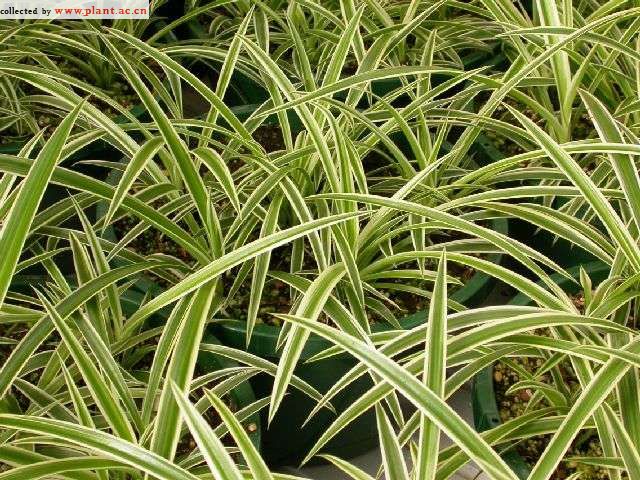Chlorophytum comosumSpider plant
科:百合科
Family:Liliaceae
属:吊兰属
common name:Spider plant
introduce:Plant Type: Herbaceous perennial
Family: Liliaceae
Missouri Native: No
Native Range: South Africa
Height: 1 to 2 feet
Spread: 1 to 2 feet
Bloom Time: Flowers freely
Bloom Color: White
Sun: Part shade to full shade
Water: Medium moisture
Maintenance: Low
General Culture:
In warmer areas where outdoor cultivation is possible, grow in light shade in well-drained soil. Indoor plants need bright indirect sunlight and watering well when in full growth. Keep moderately moist and temperatures above 45癋. Ideal temperatures are between 55?and 70? Do not over fertilize as heavily fertilized plants may not form as many new plantlets. Your plants will not run short of nutrients; its tubers store reserve food. Cut off yellowed foliage and brown tips which will occur unless conditions are perfect. Plantlets form when the spider plant receives short days and long, uninterrupted nights for at least three weeks. This plant has fleshy tuberous roots, so it will need to be divided and repotted before the roots burst your container, especially plastic containers.
Noteworthy Characteristics:
Chlorophytum comosum is native to South Africa. It has linear leaves that are green or striped white. Flowering stems bear loose panicles of small, white, starry flowers. Plantlets are formed at the flowering nodes. 慥ariegatum?has margins of white or cream. 慥ittatum?has recurved leaves with a central white stripe and green margins. When plants are full, they have an interesting, graceful, cascading habit.
Problems:
Plants are susceptible to root rot if waterlogged, whiteflies, spider mites, scales and aphids. Leaf tips turn brown from too little water, too low humidity, too much salts and excess of fluorides in the water. The foliage will also scald if placed in direct sun.
Uses:
In warmer climates or during summer months in colder areas, spider plants are well-suited to use in planters or as a groundcover. The plantlets will cascade over a wall or planter forming a fountain effect. The variegated cultivars brighten up any shaded locations. It can be used as an edging along walks or in front of shrub borders. As an indoor plant, it is used primarily in baskets. It tolerates artificial light very well and therefore makes an excellent plant for offices and commercial settings.
